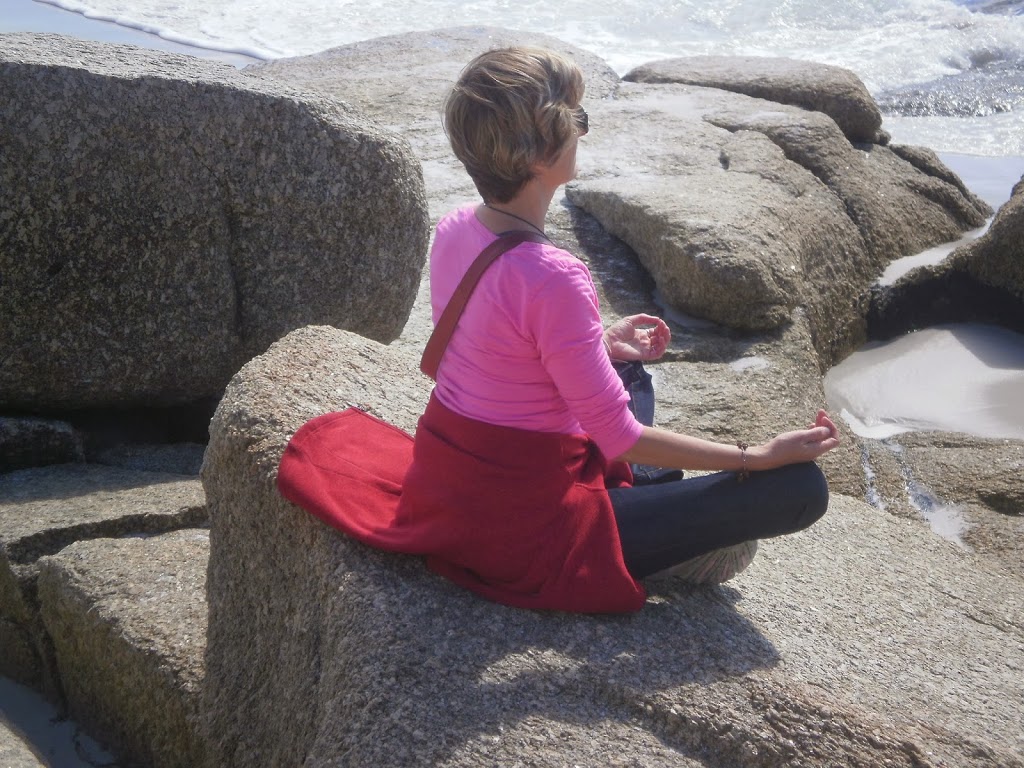Are you someone who perhaps quite likes a bit of quiet at the start and finish of your yoga class, but secretly thinks you are ‘no good’ at meditation?
Or perhaps you don’t come to yoga at all and have tried to meditate and think you are just no good at it?
This post is for you … read on!
(If you are someone who thinks being still is a waste of valuable time, or just more than impossibly hard, well stay with me – but you are probably not even reading anyway.)
Do you think your mind is just the sort of mind that never shuts up?
Perhaps you read my New Year blog and think well ‘inner wisdom’ is all very well for YOU, but I’m not sure I have any of that?
Don’t worry, I used to think I was pretty hopeless at it too. And a very long time ago I couldn’t even really see the point of meditation at all.
After all, the mind is built to create thoughts, and some of us have minds that do that oh so very well! And isn’t it good to have a mind? (Yes it is, the mind is a wonderful tool. But it doesn’t always serve us well, and it is fine to put it aside to get the benefits of meditation**.)
Let me tell you that meditation is definitely available to you.*
Oh are you feeling skeptical? You are different?
Afterall you have so many things to worry about, plan, juggle, you have had all this crap in your life. It would be different if this hadn’t happened or that hadn’t happened or if that difficult person was a bit more reasonable or if you hadn’t suffered such hardships?
Shockingly enough everyone has some crappy stuff to deal with, (yes it is true some would be construed as more crappy than others) and shockingly again in the big picture you are just not that special you know! And neither am ‘I’, yes it is shocking isn’t it?
The thing is, it is the nature of the mind to create thoughts. That’s just what minds do. And we can’t really grasp meditation with the mind. We have to put the mind to one side, so to speak, to meditate.
The good news is that there are TOOLS that are a bridge from an ordinary thinking mind state, to a meditative state.
So instead of just having to sit there and battle with thoughts, there are ways to lull the mind into a quieter state, so that it is easier for you to meditate.
These tools are concentration techniques, ways of focusing and steadying the mind. In Swami Shantananda’s wonderful 8 Steps to Stillness Learn to Meditate course (that she teaches in Blackburn South and I teach in Mt Waverley) we explore and practice a number of these tools. Things like breath focus, noticing body sensations, and mantra. Because we all learn differently, and have different preferences, we may find the technique that is best for us, but it is really good mental discipline to try them all.
It requires discipline. But gentleness as well. There is a saying that in meditation you treat your mind like you would treat a small child. Be firm, but kind. And there’s another saying about meditation that I like too:
‘You can read all you like about meditation, but the benefit comes with the actual practice.’
There is something to be said about joining a group for meditation. The combined discipline and feel of the group can be wonderful incentive to keep up your practice when you are tempted to give up. Yes it is hard, in fact some people have told me that learning to meditate is the hardest thing they have ever done! But not one person has ever said that they are sorry that they learned the techniques, or that they didn’t get any benefits. Once you start, it definitely gets easier and before you know it you look forward to your meditation time.
So, if you want some tools and support, join a group or a class that practices still mind meditation. You won’t regret it. Or just find a spot and meditate. 20 minutes a day is a good way to start. Go on, do it!
Let me know how you go.
*If you have a serious mental illness, check with your specialist before embarking on a meditation practice.
** Unless you have been hiding under a bushel, you will have heard some of the benefits of meditation. In no particular order, here’s just a few:
· Reduced blood pressure
· Reduced stress and therefore affects of the stress response in the body
· Healing
· Feelings of peace and calm and inner quiet and steadiness that eventually stay with you
· Improved capacity to cope with the ups and downs of life
· Feelings of centredness, connectedness and love
· Ability to quietly observe without being drawn in to every drama
· Fresh outlook on life (yes even the same old life)
· Access to inner wisdom or intuition
· Acceptance of self as individual within and as the whole
Here’s a link about the 8 Steps to Stillness Learn to Meditate course and ongoing meditation at Waverley Yoga Studio: http://www.waverleyyoga.com.au/meditation.html
Here’s the link to Swami Shantananada’s Reflections: http://www.swamishantananda.com.au
